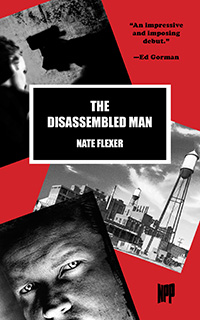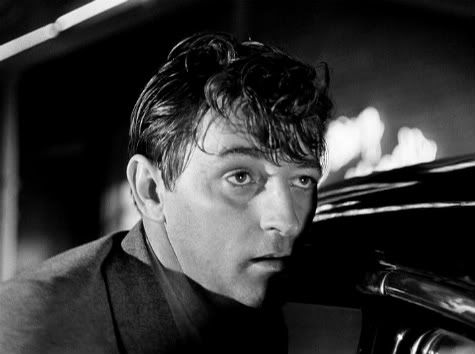
Harry Whittington writes of characters whose intense loneliness is equaled only by their unshakable paranoia. Their fantasies and nightmares are intertwined so as to be inseparable from each other – and they always come to fruition. Sometimes things work out; often they don’t. Either way, the end result is of little consequence compared to the relentless psychological anguish and physical suffering they endure along the way. And it is these pains that Whittington so acutely transmits to the reader. The unstable psyche of his protagonists infects us: panting and desperate, and unable to see things clearly, just the warped perceptions and pipe dreams of those who have lost the only thing they had to live for, and for whom finding it means death. For these characters, even in winning, there's only losing.
“Prolific” hardly seems a sufficient description of Whittington, often referred to as “The King of the Paperbacks.” Numbers vary depending on source, but he penned at least 170 novels in his career which began in the mid 1940s, hit its stride and peaked in the 1950s, slumped in the 1960s, effectively died in the 1970s, then was revived in the 1980s. It’s a career that anyone would be proud to have lived, though it’s hard to say if anyone would have volunteered for it if they knew of all the ups and downs and still more downs that they would have to weather. And weather them Whittington did – and with the help of Stark House Press and David Laurence Wilson, Whittington’s legacy will hopefully only continue to grow in the years to come.
To Find Cora,
Like Mink Like Murder, and
Body and Passion have just been collected in a single volume by Stark House (
available to purchase HERE), along with an essay by Wilson called “Harry and His Bastard Children,” detailing his quest to track down 39 “lost books,” including an elusive novel published only in France (translated, of course) and in a severely altered form under a pseudonym in America. That book turned out to be
Like Mink Like Murder, and until now it had never seen the light of day in its original form as Whittington intended. The other two in the collection were also long unavailable and out-of-print, making their reappearance both long awaited and worthy of celebration.
Wilson’s essay goes beyond a mere background check – his is an archeology of a legacy, and in coming to terms with the personal, artistic, political, economic, and particularly editorial forces that all collided during Whittington’s career, Wilson effectively writes one of the most thorough, evocative descriptions of what it meant to a writer in the early days of the Paperback Original. From dealing with publishers to dealing with the FBI; the pressures of rising sales to the pressures of declining sales; the pride of seeing multiple books all declaring your name to seeing your work appear nameless, or to not even know what name it was published under; and from being an overlooked, forgotten writer to one who is remembered and celebrated once again. I’d rather not spoil the riches of Wilson’s deep insight and meticulous research by trying to synopsize his essay, so I’ll leave it at this: the twenty-page introduction is worth the price of the book alone.

Though lesser known, the three Whittington novels selected can hold their own against any of the better-known Whittington titles. They all share in the same paranoid psychosis, which by page one is already running at 100% and only continues to rise throughout their swift, nerve-jittering 100-ish pages. On the very first page of
To Find Cora (1963, originally
Cora is a Nympho!), Joe Byars is already an emotional and mental wreck, distraught without his wife Cora, and crisscrossing the country looking for her. All it takes is one paragraph of Like Mink Like Murder (1957,
T’as des Visions! 1965,
Passion Hangover, under the pseudonym J.X. Williams) for Sammy Baynard’s past to come back to haunt him. And
Body and Passion (1952, under the pseudonym Whit Harrison) is no different: on page one Jeff Taylor is already hunted and hiding, and about to make a last-ditch effort to save his hide that will wind up burning down the only hideaway he has ever known.
When at his best, Whittington was an innovator, often turning archetypical characters and plots on their head, and finding wild and new ways to tell stories from unusual angles. The first half of
To Find Cora occurs almost in real-time. Highly cinematic, each successive paragraph comes like the next in an unalterable domino-like effect. After being tipped off by the police, Byars heads to a small farm in search of his wife and winds up the prisoner of man whose possessive angst and delusions he understands all too well. The man thinks Byars has come to steal his wife and will do anything to keep her – and to make sure that Byars will never leave. Whittington writes in the first-person frenzy of man to whom reason is always secondary to impulse. Byars’ warped worldview overtakes the narrative, and we are compelled to follow his feverish trail to the bitter, uncompromising end.
Like Mink Like Murder starts with a paragraph that could rightly preface any of Whittington’s novels:
“When I got back to the office from my delivery, I was sweated down, and only partly because it was another hot morning and I had run, trying to stay ahead of my thoughts. It was a losing battle…” Whittington’s characters are doomed by the very nature of their preoccupations: they worry too much. Worrying about worrying, about what has happened, what will happen, they are too busy worrying to even consider what is happening in front of them. Sam Baynard is a reformed ex-con with a steady job as a milkman and, for once, a nice girl who he dreams of marrying. Then Elva comes back into his life (even her name is 3/4s “evil”), and with her come his old partners-in-crime who want him back for one last job, or else they’ll put him right back behind bars for jewelry heist he’s still wanted for. Whittington’s protagonists are never wholly good or bad, and Baynard is a perfect example of these conflicting inner-tensions. His identity is constantly in flux: the world won’t let him be good, and he won’t let himself be bad. And the truth is, there’s a little bit of both within him, and never will ever be entirely absent, no matter how much he tries to eradicate either part of his identity.

The most experimental of the three is
Body and Passion, which begins with suspected murderer Jeff Taylor kidnapping Ben Young, the crooked lawyer who has framed him in order to help further his campaign for governor. But when the cabin catches fire during a struggle, only one man makes it out alive – though no one knows who he is. Both men were burned beyond recognition, and the survivor is suffering from extreme amnesia and has no memories. Referred to throughout only as “X,” the survivor is caught between both identities: Taylor’s gang wants their boss back, and the Young family wants their son back. Neither milieu is as loving as they pretend, nor are Taylor and Young as different as they once seemed. The use of “X” is also a clever way to make the reader identify with the protagonist. A line like, “X was thinking, there’s still trouble, still confusion and I’m still in the middle of it,” is basically an invitation to insert your own name and your own life.
The lack of a distinct boundary between hero and villain – or cop and robber, or whatever variation you prefer – has always been a preoccupation in crime fiction. “The two men in that cabin were very similar,” reminds the doctor, “in build and in many bodily characteristics. The differences have been – if you will see it that way – dissolved by the fire.” In Mickey Spillane’s
One Lonely Night, Mike Hammer is lambasted by a judge for acting like the punks he kills than the knight he calls himself, and in
Touch of Evil Orson Welles’ Hank Quinlan orchestrates crimes in order to frame those he is certain are guilty of something. Other similar examples proliferate the genre, but few are as focused on this blurred identity as Whittington is in
Body and Passion, who probes the matter so deeply that X’s identity remains a mystery until the final pages of the book.
Fans of Whittington need no urging to pick this one up. Those that haven’t read him would do well to start with this collection, as it serves as a great introduction to one of the most distinct voices of classic crime fiction.
And now for a couple of quotes from each of the three books:
To Find Cora
“I turned slowly toward the sound of his voice. It was like something crazy, like something that had no relation to reality, but it was real all right.”
“He shivered all over. He saw now he was wrong. This didn’t make it better. It made it worse. Where he was – with whatever it was driving him – he couldn’t afford to be wrong, he had to be right every time. It was more than compulsion, it was the frantic hope of existence with him.”
Like Mink Like Murder
“I pressed her down into the mattress, kissing her mouth, getting the same rough kiss in return. We didn’t have love, but we had hatred, and it was almost as good.”
“As hard as I hoped and sweated, nothing was going to wake me from this nightmare. This wasn’t the kind you could escape by falling off your bed.”
“Nice girls seldom get mink.”
Body and Passion
“How much can a man stand? How much hounding? How much lying and oppression? A man can’t take what I been through and go on being sane. It just don’t add up that way. And, Mister, I’m gettin’ crazier by the minute.”
“Living like this was existing in a vacuum. Nobody, belonging nowhere. It was illness that was a bottomless void and he had the feverish sensation of drifting through it, without anchor or security or hope.”----------
(Stark House cover designed by
Mark Shepard;
Body and Passion cover courtesy of
Pulp of the Day;
Cora is a Nympho! cover courtesy of
macavityabc)
 Hunt through the Cradle of Fear by Charles Ardai (Leisure Books)
Hunt through the Cradle of Fear by Charles Ardai (Leisure Books) Losers live Longer by Russell Atwood (Hard Case Crime)
Losers live Longer by Russell Atwood (Hard Case Crime) The Disassembled Man by Nate Flexer (New Pulp Press)
The Disassembled Man by Nate Flexer (New Pulp Press) Death Ground by Ed Gorman (Leisure Books)
Death Ground by Ed Gorman (Leisure Books) Between the Dark and the Daylight edited by Ed Gorman and Martin Greenberg (Tyrus Books)
Between the Dark and the Daylight edited by Ed Gorman and Martin Greenberg (Tyrus Books)  Panic Attack by Jason Starr (Minotaur)
Panic Attack by Jason Starr (Minotaur)



















